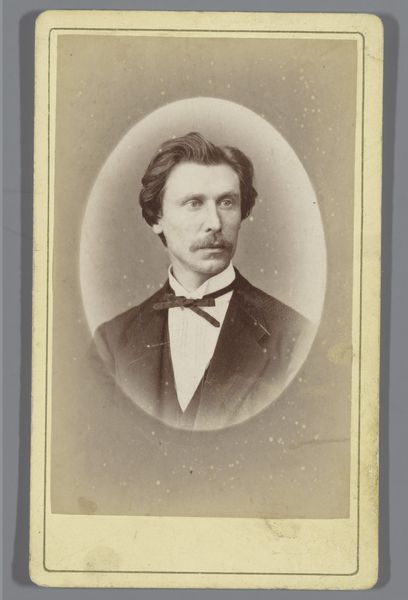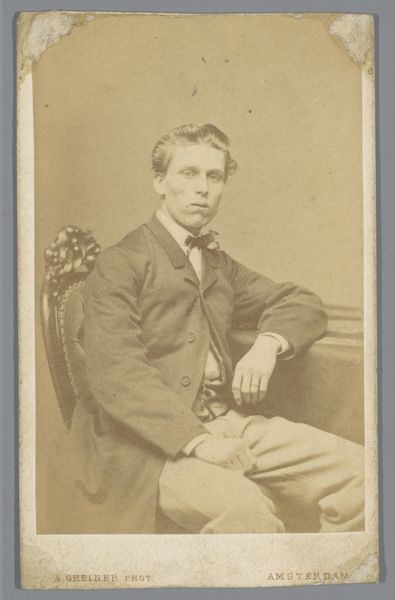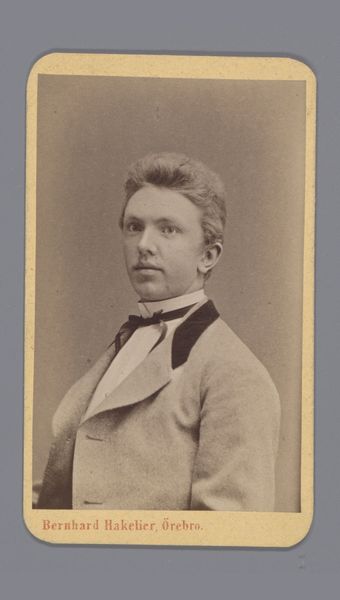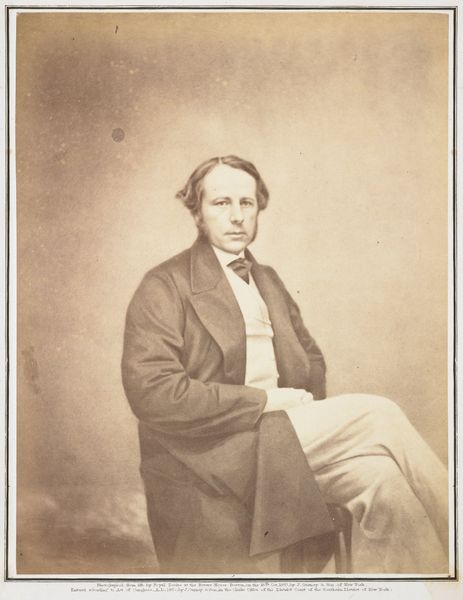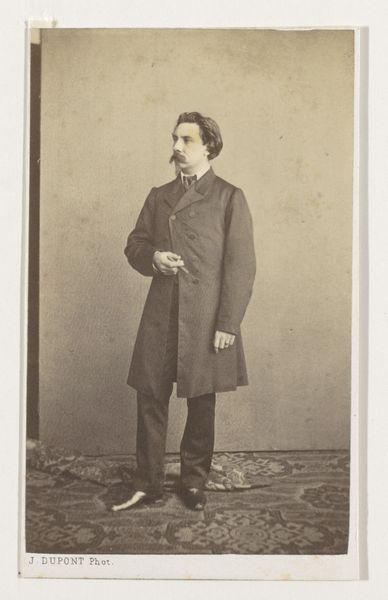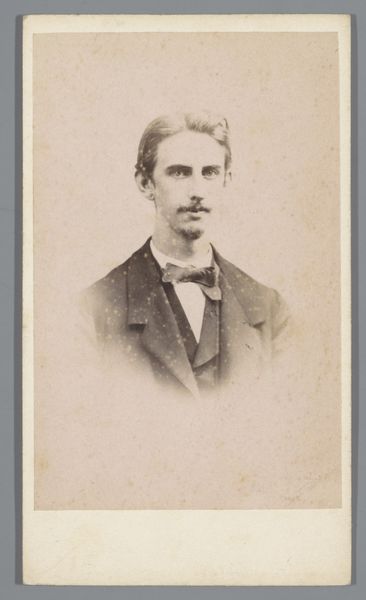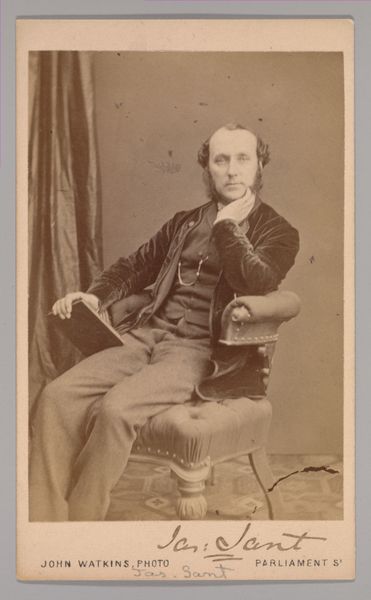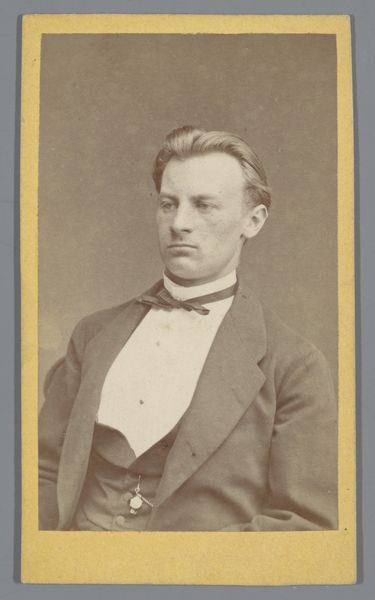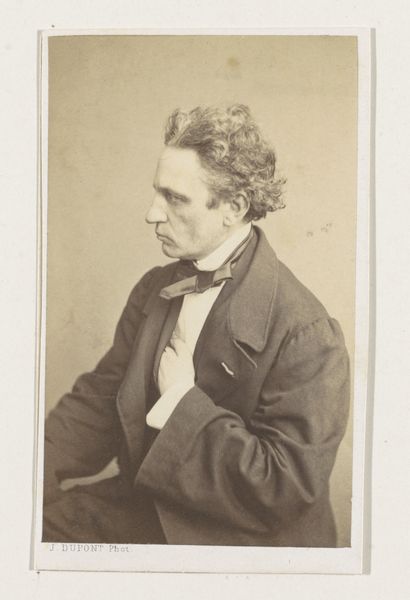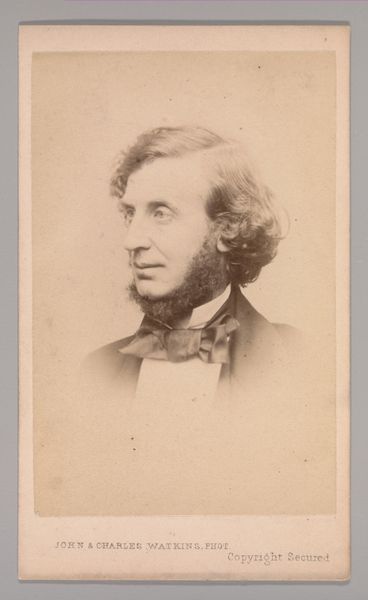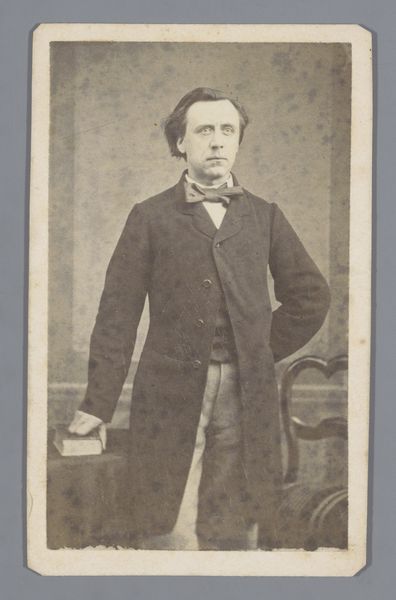
paper, photography, gelatin-silver-print
#
portrait
#
paper
#
photography
#
historical fashion
#
gelatin-silver-print
#
19th century
#
paper medium
Dimensions: height 106 mm, width 63 mm
Copyright: Rijks Museum: Open Domain
Curator: This is a photographic portrait of an unknown man, taken sometime between 1862 and 1874 by Paul Joseph Nicolas Nestor Schaffers. It's a gelatin silver print on paper, a very common format for the time. Editor: There's an immediate stillness, a sense of posing almost deliberately. The light across his face creates a delicate pattern—a shadow emphasizes the high cheekbones, and the light in his eyes hints at introspection. Curator: Indeed. These photographic portraits became immensely popular in the mid-19th century, driven by the rising middle class who wanted to immortalize themselves in a manner previously reserved for the aristocracy. This allowed a broader segment of society to participate in image making and representation. Editor: You can see that reflected in his clothes too. He’s wearing what appears to be a wool suit. While not overly elaborate, the vest and cravat project a sense of respectable bourgeois self-fashioning. There’s also the formal rigidity of the posture typical for photographs in those days. Curator: Precisely. Photography studios popped up everywhere to serve this new demand, and the sitter’s presentation—their clothing, posture, even the background—were all carefully considered elements in constructing their public persona. Also, it took so long to expose that most people kept still. Editor: The limited tonal range is beautiful though. Sepia-toned images of that era have a melancholic feel. There’s an artistic restraint, emphasizing form and subtle texture above vibrant color. This limited palette creates a unified visual experience—inviting focus on detail. Curator: These portraits also acted as important social documents. Beyond simple mementos, they shaped visual culture, standardized certain codes of presentation and became essential markers in the construction of individual and collective identities during the rapidly modernizing nineteenth century. Photography democratized self-presentation while also formalizing it. Editor: It is thought provoking to look at. What can one gather from this frozen moment in time? I feel as if the details have faded a bit, becoming generalized and emphasizing that pensive and subtle face. Curator: Exactly, looking at it through that lens is important in understanding the significance it held in that era. The democratization of portraiture led to new societal interactions and documentation strategies. Editor: True enough. It feels we both gain valuable insights from analyzing how form meets historical content.
Comments
No comments
Be the first to comment and join the conversation on the ultimate creative platform.

